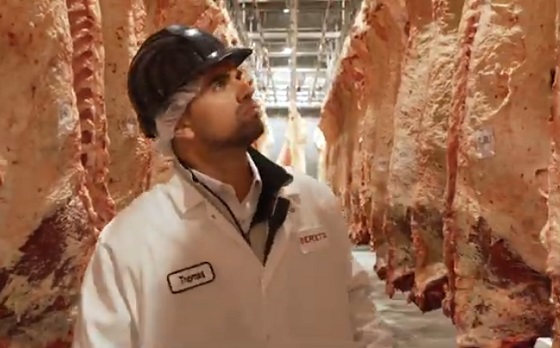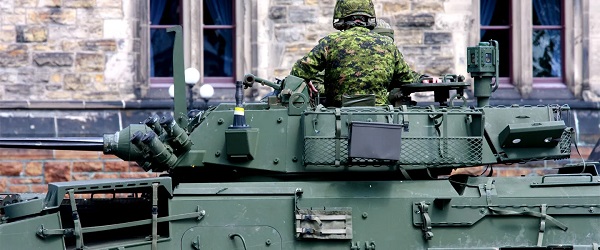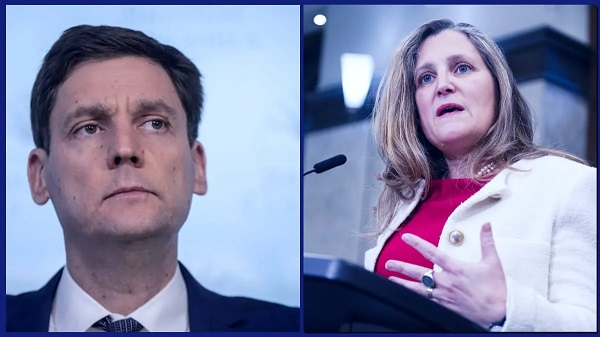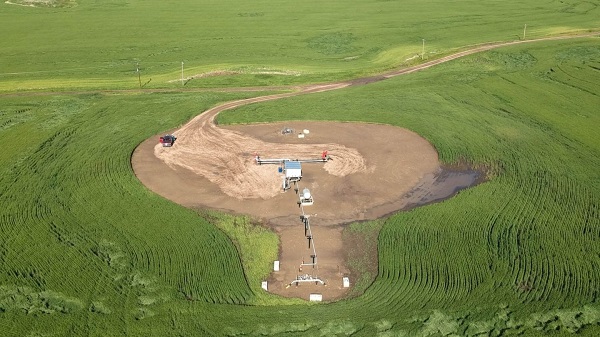Alberta
Alberta Infrastructure reviews 2024 progress

Hundreds of infrastructure projects completed or underway throughout 2024 helped build Alberta communities, boost the economy and support thousands of jobs.
Throughout the province, Infrastructure worked in collaboration with industry, school jurisdictions, Alberta Health and municipal and community partners to deliver the new, modernized and well-maintained public facilities that house the vital programs and services Alberta families and communities rely on.
“This past year, we completed hundreds of projects across Alberta, providing growing communities with new and modernized facilities. We also passed the Real Property Governance Act, a piece of legislation that helps the government better manage assets for Albertans and ultimately provides better value for our tax dollars. As we move into 2025, our team is committed to delivering the essential infrastructure needed to support the demands of our growing and robust economy.”
With a strong outlook for Alberta’s construction market, 2025 is shaping up to be another productive year. Alberta Infrastructure remains committed to completing work on schedule and on budget, while maximizing the value of taxpayer money.
This past year saw a focus on further developing relationships with industry partners across various trades, backgrounds, specialities and sectors. In 2025, this work will continue through Industry Liaison Committees, roundtables and other opportunities that will maximize collaboration and productivity. Alberta’s future is strong, competitive and full of opportunity.
2024 Infrastructure highlights
Schools
- In September, Alberta’s government announced a generational commitment of $8.6 billion to build schools now. This investment will award up to 90 new schools and up to 24 modernizations or replacements over the next three years.
- In addition, a new in-budget approval process has been introduced for school construction that will accelerate project progression through development stages, reducing project timelines by as much as six months.
- In 2024, 10 schools were built across the province, creating space for more than 9,600 students in nine communities, including:
- Blackfalds, Calgary, Coaldale, Edmonton, Fort Vermillion, Grande Prairie, Langdon, Leduc and Wabasca-Desmarais.
- Entering the new year, another 82 school projects are underway, progressing through various stages of planning, design and construction.
Health Facilities
- As announced in Budget 2024, a modern, standalone Stollery Children’s Hospital in Edmonton remains a key priority with $20 million budgeted over the next three years for early planning.
- Redevelopment of Calgary’s Rockyview General Hospital Intensive Care Unit, Coronary Care Unit and Gastrointestinal Clinic were completed in 2024.
- Renovations of operating rooms and support areas in Rocky Mountain House through the Alberta Surgical Initiative (ASI) wrapped up this past spring.
- Through the ASI, 31 projects are underway in planning, design or construction in Brooks, Calgary, Edmonton, Innisfail, Lethbridge and Olds.
- Another 53 health projects are underway going into 2025.
- This includes awarding the construction manager contract for the Red Deer Regional Hospital Centre (RDRHC) this past summer and making progress on the new patient tower and redevelopment.
- The procurement process for the RDRHC Ambulatory building is ongoing, with contractor selection expected in spring 2025 and groundbreaking in summer 2025.
- This includes awarding the construction manager contract for the Red Deer Regional Hospital Centre (RDRHC) this past summer and making progress on the new patient tower and redevelopment.
Government Facilities
- The Lakeview Recovery Community in Gunn completed construction and was handed over to Mental Health and Addiction for operations.
- Construction of the Calgary Recovery Community is anticipated to be complete in early 2025.
- The new $203-million Red Deer Justice Centre completed construction and will provide the community with 12 courtrooms when it officially opens in the first quarter of 2025.
- Another 20 new government facility projects are underway, such as recovery community facilities in Grande Prairie and Edmonton, and campus upgrades to the Yellowhead Youth Centre.
Capital Maintenance and Renewal
- Work done through Capital Maintenance and Renewal (CMR) helps upgrade existing government facilities and assets. In 2024, work finished on 85 CMR projects, including construction of the new reflecting pool and fountain at the Alberta legislature grounds in time for Canada Day celebrations.
- Another 212 CMR projects are underway at government facilities going into the new year, with an additional 516 specifically at health facilities.
Public-Private Partnership (P3) Awards
- In May, Alberta’s government completed construction of five high schools in Blackfalds, Langdon, Leduc and two in Edmonton. All finished on schedule, on budget and ready for the 2024-25 school year.
- This bundle received a Silver Award for Design & Construction at the 2024 National Awards for Innovation and Excellence in P3s.
- Procurement is underway to deliver another bundle of new Alberta schools in Airdrie, Blackfalds, Calgary, Chestermere, Edmonton and Okotoks.
- The Evan-Thomas Water and Wastewater Treatment Plant in Kananaskis won Best Operational Project at the P3 Partnerships Bulletin awards.
Legislation
- In May 2024, Infrastructure’s Real Property Governance Act received royal assent. The act helps increase transparency and reduce red tape by creating consistent rules across government for the disposal of property and creates a centralized inventory of public lands and buildings to help government better manage these assets for Albertans.
- In November 2024, Alberta’s government introduced amendments to the Public Works Act (PWA) that mandate payment timelines and invoicing provisions for public infrastructure work, helping ensure contractors and subcontractors are paid fairly and promptly.
Agriculture
Lacombe meat processor scores $1.2 million dollar provincial tax credit to help expansion

Alberta’s government continues to attract investment and grow the provincial economy.
The province’s inviting and tax-friendly business environment, and abundant agricultural resources, make it one of North America’s best places to do business. In addition, the Agri-Processing Investment Tax Credit helps attract investment that will further diversify Alberta’s agriculture industry.
Beretta Farms is the most recent company to qualify for the tax credit by expanding its existing facility with the potential to significantly increase production capacity. It invested more than $10.9 million in the project that is expected to increase the plant’s processing capacity from 29,583 to 44,688 head of cattle per year. Eleven new employees were hired after the expansion and the company plans to hire ten more. Through the Agri-Processing Investment Tax Credit, Alberta’s government has issued Beretta Farms a tax credit of $1,228,735.
“The Agri-Processing Investment Tax Credit is building on Alberta’s existing competitive advantages for agri-food companies and the primary producers that supply them. This facility expansion will allow Beretta Farms to increase production capacity, which means more Alberta beef across the country, and around the world.”
“This expansion by Beretta Farms is great news for Lacombe and central Alberta. It not only supports local job creation and economic growth but also strengthens Alberta’s global reputation for producing high-quality meat products. I’m proud to see our government supporting agricultural innovation and investment right here in our community.”
The tax credit provides a 12 per cent non-refundable, non-transferable tax credit when businesses invest $10 million or more in a project to build or expand a value-added agri-processing facility in Alberta. The program is open to any food manufacturers and bio processors that add value to commodities like grains or meat or turn agricultural byproducts into new consumer or industrial goods.
Beretta Farms’ facility in Lacombe is a federally registered, European Union-approved harvesting and meat processing facility specializing in the slaughter, processing, packaging and distribution of Canadian and United States cattle and bison meat products to 87 countries worldwide.
“Our recent plant expansion project at our facility in Lacombe has allowed us to increase our processing capacities and add more job opportunities in the central Alberta area. With the support and recognition from the Government of Alberta’s tax credit program, we feel we are in a better position to continue our success and have the confidence to grow our meat brands into the future.”
Alberta’s agri-processing sector is the second-largest manufacturing industry in the province and meat processing plays an important role in the sector, generating millions in annual economic impact and creating thousands of jobs. Alberta continues to be an attractive place for agricultural investment due to its agricultural resources, one of the lowest tax rates in North America, a business-friendly environment and a robust transportation network to connect with international markets.
Quick facts
- Since 2023, there are 16 applicants to the Agri-Processing Investment Tax Credit for projects worth about $1.6 billion total in new investment in Alberta’s agri-processing sector.
- To date, 13 projects have received conditional approval under the program.
- Each applicant must submit progress reports, then apply for a tax credit certificate when the project is complete.
- Beretta Farms has expanded the Lacombe facility by 10,000 square feet to include new warehousing, cooler space and an office building.
- This project has the potential to increase production capacity by 50 per cent, thereby facilitating entry into more European markets.
Related information
Alberta
Alberta Independence Seekers Take First Step: Citizen Initiative Application Approved, Notice of Initiative Petition Issued

Alberta’s Chief Electoral Officer, Gordon McClure, has issued a Notice of Initiative Petition.
This confirms a Citizen Initiative application has been received and the Chief Electoral Officer has determined the requirements of section 2(3) of the Citizen Initiative Act have been met.
Approved Initiative Petition Information
The approved citizen initiative application is for a policy proposal with the following proposed question:
Do you agree that Alberta should remain in Canada?
The Notice of Initiative Petition, application, and statement provided by the proponent are available on Elections Alberta’s website on the Current Initiatives Petition page.
As the application was received and approved prior to coming into force of Bill 54: Election Statutes Amendment Act, the Citizen Initiative process will follow requirements set out in the Citizen Initiative Act as of June 30, 2025.
Next Steps
- The proponent must appoint a chief financial officer within 30 days (by July 30, 2025).
- Once the 30-day publication period is complete and a chief financial officer has been appointed, Elections Alberta will:
- issue the citizen initiative petition,
- publish a notice on the Current Initiatives Petition page of our website indicating the petition has been issued, specifying the signing period dates, and the number of signatures required for a successful petition, and
- issue the citizen initiative petition signature sheets and witness affidavits. Signatures collected on other forms will not be accepted.
More information on the process, the status of the citizen initiative petition, financing rules, third party advertising rules, and frequently asked questions may be found on the Elections Alberta website.
Elections Alberta is an independent, non-partisan office of the Legislative Assembly of Alberta responsible for administering provincial elections, by-elections, and referendums.
-

 Alberta10 hours ago
Alberta10 hours agoAlberta Independence Seekers Take First Step: Citizen Initiative Application Approved, Notice of Initiative Petition Issued
-

 Crime9 hours ago
Crime9 hours agoNational Health Care Fraud Takedown Results in 324 Defendants Charged in Connection with Over $14.6 Billion in Alleged Fraud
-

 Health8 hours ago
Health8 hours agoRFK Jr. Unloads Disturbing Vaccine Secrets on Tucker—And Surprises Everyone on Trump
-

 Bruce Dowbiggin11 hours ago
Bruce Dowbiggin11 hours agoThe Game That Let Canadians Forgive The Liberals — Again
-

 Alberta1 day ago
Alberta1 day agoCOVID mandates protester in Canada released on bail after over 2 years in jail
-

 Crime2 days ago
Crime2 days agoProject Sleeping Giant: Inside the Chinese Mercantile Machine Linking Beijing’s Underground Banks and the Sinaloa Cartel
-

 Business1 day ago
Business1 day agoCanada’s loyalty to globalism is bleeding our economy dry
-

 armed forces1 day ago
armed forces1 day agoCanada’s Military Can’t Be Fixed With Cash Alone






